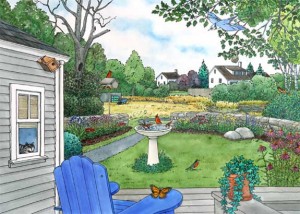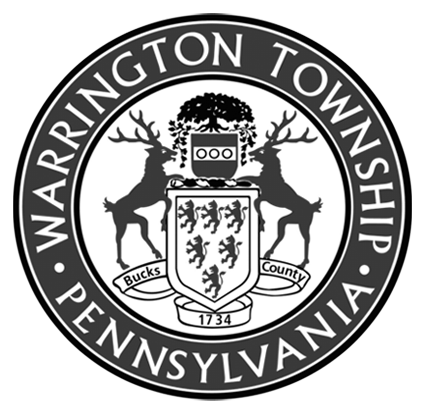
(picture and text provided by Audubon Society)
Bird populations are in decline as suitable habitat continues to be lost to development, forestry, agricultural, and other land uses. With 2.1 million acres converted to residential use each year, how you landscape and maintain your yard can make a difference for bird conservation and environmental health. You and your family can enhance your enjoyment of your property by making it a more welcoming place for birds and a more balanced part of the natural community.
What is a Healthy Yard?
A healthy yard is not really a “yard” at all. It’s a habitat, a sanctuary for wildlife and for you and your family. A healthy habitat provides a natural haven beneficial to birds, other creatures, and people, and is an extension of your home and part of a larger ecoregion. Learn how to be a responsible caretaker of your piece of the earth. The EAC is promoting Healthy Yards. Visit Audubon At Home and Email us @ [email protected].
The main components of a Healthy Yard are identified below, Click on the links for more information:
Native Plants
Native Plants have co-evolved with native birds, so they are more likely to provide the right size food and the right amount of nutrients at just the right time of year. But what exactly is a native plant? There are varying definitions. Because early settlers in North America brought with them a variety of native European plants, some consider the plants that were growing prior to the arrival of Europeans to be native. A broader definition that is widely accepted is that offered by the Federal Native Plant Committee: “a native plant species is one that occurs naturally in a particular region, state, ecosystem, and habitat without direct or indirect human actions.”
To learn more, visit :
Landscaping with Native Plants
Native Plants, Natural Landscapes
Bowman’s Hill Wildflower Preserve
Wildlife Habitat
Backyards and other private lands provide essential habitat for many species of birds. Ensuring that birds have good sources of food, nesting sites, clear water, and protective cover becomes more important every day, as more habitat is lost to development, degradation and fragmentation.
Birds are important indicators of environmental health and play a significant role in maintaining the earth’s ecological balance–propagating plant life as pollinators and seed dispersers and controlling insect populations. Birds also bring beauty and enjoyment to our lives as one of the most accessible forms of wildlife. If their populations are in decline, it can mean that our natural resources are in trouble as well.
Stormwater
As stormwater flows over land it picks up heavy metals, bacteria, pesticides, suspended solids, nutrients, and floating materials. In the United States, stormwater runoff from residential, commercial, and industrial areas is responsible for 21% of impaired lakes and 45% of impaired estuaries. In the Mid-Atlantic region alone, stormwater is responsible for over 4,000 miles of impaired streams. The impacts from stormwater are caused not only by the pollutants in the runoff, but also by its volume. As the water flows over land it can erode soil and then redeposit that soil in streams, causing muddy water and degrading aquatic habitats. Homeowner can reduce stormwater runoff by diverting all roof runoff to grassed areas, installing rain barrels and or rain gardens to capture roof runoff.
USEPA Stormwater
After The Storm
Homeowners Guide to Stormwater Management
Invasive Species
Invasive plants are typically defined as non-native species that compete vigorously with other species for space and resources, and consequently spread rapidly and take over habitat. Non-natives are also known as “non-indigenous,” “introduced,” “exotic,” or “alien,” and are species that are not naturally occurring in a particular ecosystem. Invasives are a growing problem. Approximately 42 percent of the plants and animals federally listed as endangered or threatened species are considered at risk primarily because of invasive plant, animal, or microbial species. The increase of non-native plants has recently been linked to the decline of songbirds; robin and thrush nests located in non-native shrubs and trees appear to suffer higher predation rates than those situated in native species. The researchers suggest that characteristics of the native plants in question, such as the presence of thorns or less branch strength, better deter predators.
Invasives cause economic as well as ecological impacts. Invasive species of all types, not just plants, are estimated to cost $137 billion annually in losses to agriculture, forestry, fisheries, and the maintenance of open waterways in the United States.


